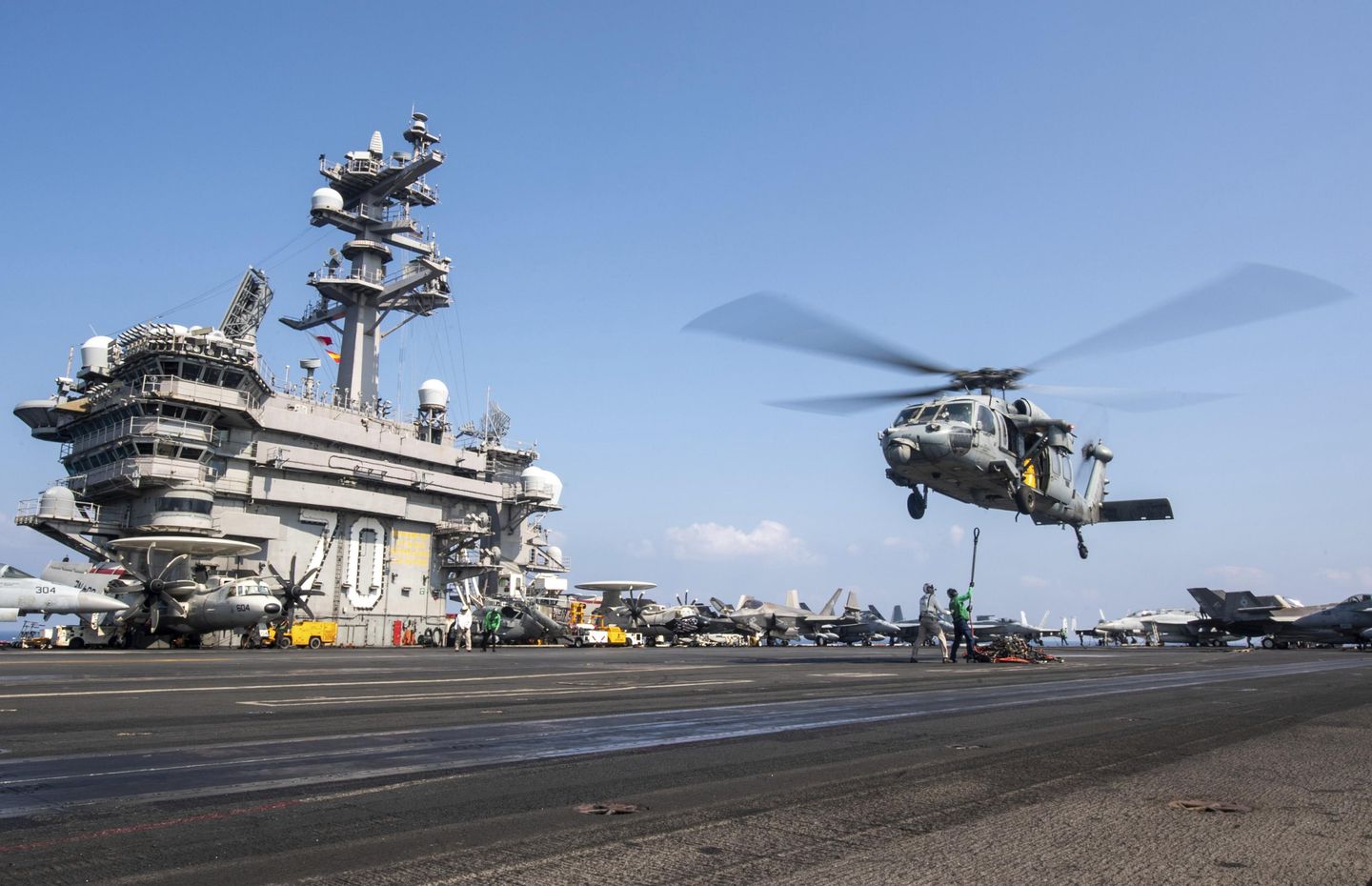
Ukraine’s stunning success with drones in the Black Sea — sinking or heavily damaging an estimated 30 Russian naval vessels over three years of war — has not gone unnoticed in the U.S.
Drones have become a priority at the Pentagon.
Earlier this month, the Defense Advanced Research Projects Agency christened the USX-1 Defiant, a first-of-its-kind autonomous unmanned surface vehicle designed from the ground up for deployment without a human crew.
The 180-foot, 240-metric-ton vessel, part of DARPA’s No Manning Required Ship program, has a simplified hull design that will allow rapid production and maintenance operations at any port or shipyard that can support yachts or working boats, officials said.
“Defiant is a tough little ship and defies the idea that we cannot make a ship that can operate in the challenging environment of the open ocean without people to operate her,” said Greg Avicola, the program manager for the NOMARS program. “She’s no wider than she must be to fit the largest piece of hardware, and we have no passengers to worry about.”
“These systems will play a critical role in the future of naval warfare by extending fleet reach, improving situational awareness, and increasing combat effectiveness,” Adm. Jim Kilby, the vice chief of Naval Operations, said in a statement after visiting BlackSea Technologies in June to observe the Baltimore-based company’s work developing unmanned surface vessels. “We see unmanned systems as a force multiplier for traditional vessels, not a replacement.”
The Navy wants maritime drones for both fleet operations and continued experimentation to advance robotic maritime strategies and tactics.
Ukraine’s naval drones for the most part resemble speedboats without seats. They are capable of carrying explosives, weapons, or surveillance equipment. The remote-control vessels are thought to cost about $250,000, making them a cost-effective means for one-way attack missions.
The technology company that designed the Defiant says the vessel “embodies a new spirit of innovation.”
“The Defiant reimagines naval architecture, freeing us from the constraints of human habitation to create a ship capable of operating autonomously at sea,” said Tom Watson, the CEO of the Virginia-based Serco, Inc. “This aligns with the nation’s mission of delivering a distributed, highly capable USV fleet that can operate in contested waters and high-threat environments, extending the reach of our Navy without putting our sailors at risk.”
The U.S. Navy is aiming to build an autonomous fleet that can move in swarms without any human command. It’s a more ambitious task than merely pointing a kamikaze boat at an adversary and is expected to cost more than $250,000 each.
Congress this year appropriated $2.1 billion for the development, procurement, and integration of purpose-built medium unmanned service vessels. While relatively small, the Defiant is designed for extended voyages in the open ocean and can handle operations in heavy seas, officials said.
“Defiant class vessels provide cost-effective, survivable, manufacturable, maintainable, long-range, autonomous, and distributed platforms, which will create future naval lethality, sensing, and logistics,” said DARPA Director Stephen Winchell. “Defiant will protect and expand the capabilities of manned ships, multiple combat power at low cost, and unlock new American maritime industrial capacity.”
The Pentagon in 2023 launched its $1 billion Replicator program, which aims to help the military acquire thousands of aerial and maritime drones along with the software needed to control them.
Ukraine’s naval drones have evolved beyond their early use as strictly kamikaze-style sea boats. Kyiv has used them as mini-aircraft carriers to deploy explosives-carrying unmanned aerial drones. Last year, Ukraine heavily damaged Russian-controlled gas platforms in the Black Sea with unmanned aerial vehicles [UAVs] launched from unmanned surface vessels.
“The strikes also add to the Ukrainian Navy’s growing arsenal of land strike capabilities,” journalist and researcher David Kirichenko wrote earlier this year in an essay for the Center for European Policy Analysis. “Russian military bloggers have also commented that Ukraine is using unmanned surface vessels to launch one-way drones in attacks on targets around the Black Sea.”
The Iran-backed Houthis frequently launched unmanned surface vessels at merchant vessels and allied warships as part of their attacks on shipping in the Red Sea. They began the attacks in October 2023 following the Hamas massacre in southern Israel.
Small, unmanned surface vessels are part of the Navy’s family of unmanned maritime systems, which officials insist will complement and support the traditional fleet across a range of missions. The Navy plans to field and operate progressively more capable unmanned maritime systems, enhancing endurance and resilience while minimizing risk to human life.
“The development and deployment of unmanned systems, including the small USV, is a strategic acquisition for the Navy,” Adm. Kilby said. “A strong partnership with industry is critical as we seek to maintain technological superiority and operational advantage in an increasingly complex maritime environment.”
The Navy’s unmanned maritime vessel program has faced some growing pains since it began. In June 2025, a support boat was capsized by a drone that was being towed out of the harbor at Naval Base Ventura County in southern California. The operator of the support boat was pulled from the water and refused medical treatment.
“The unmanned vehicle received an inadvertent command that turned the engine on, causing the towed vehicle to accelerate past and capsize the support boat,” according to Defense Scoop, a website that covers the military. “As a result, the training activity immediately held a safety stand-down with all members of the activity and is implementing additional safety procedures.”
Other tests have seen drone vessels unexpectedly stall or smash into other unmanned boats.











